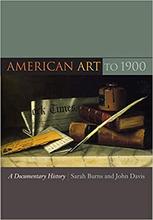Distant View of Niagara Falls by Thomas Cole might also be called The Art of Deletion and Idyllic Insertion.
Cole, a landscape painter, came to America from England in 1818 and started the Hudson River School, an American group of painters devoted to landscapes in the New York region. The group included artists like Asher B. Durand, John Constable, and Albert Bierstadt later on.
This landscape in particular, which looks pretty darn idyllic and lovely at first glance, is nothing more than a landscape of lies! The deceit going into this landscape is so rampant and extreme that there’s a kind of mastery to the madness that you can’t help but admire. Cole, before heading back to England in 1829, stopped at the Niagara Falls to do a series of sketches and to take detailed notes. When he got back to England, he then painted this landscape in 1830. At the time Cole stood at Niagara Falls, it was already surrounded by factories (some of which even harnessed the falls’ energy), hotels, and scenic outlooks where tourists gathered to take in the scene. The edits he made to remove the industrial aspects of the place were drastic; he added an entire forest that wasn’t there! On top of that, he didn’t even visit in autumn, as depicted. Cole feared the advancement of technology and the quick pace of industrialization and instead valued natural romanticism. As a result, he edited and shaped the landscape to fit a sense of idealism, and painted a scene that didn’t exist anymore.
You’ll also notice that Cole painted Native American figures in the center of the painting. This was to signal to his English fanbase that the painting was from an American landscape, and their scale also acts to show big the waterfall was. The problem? Cole has totally erased the impact of colonialist expansion on Native lands. Their small presence perpetuates the idea of the "vanishing Indian," that native culture simply waned over time for various reasons, reinforcing the notion of "Manifest Destiny." This harmful trope not only ignores the direct violence against native people by European settlers, but also negates the rich heritage and diversity of cultures which very much still exist.
Though Cole's vision of the American landscape seems to be more fantasy than reality, it’s worth noting that many critics praise him for offering a last glimpse into what these lands looked like before they were lost forever. In particular, James Feminore Cooper - a writer who was already challenging people to reconsider how they were using and depleting resources in America in the mid-1800s - said of Cole’s work, “I know of no painter whose works manifest such high poetic feeling as those of Cole.”

















I think it is interesting that when Cole painted this picture of Niagra falls that it was indeed not in the fall like it is in the photo. I also like the little Indian that stands in front of this massive waterfall!